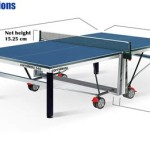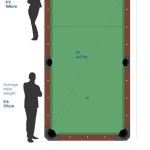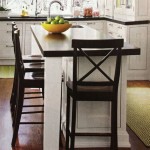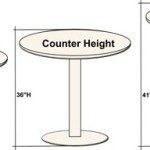The Most Comfortable Chairs For Reading
Finding the ideal chair for reading is a crucial step in creating a comfortable and enjoyable reading experience. The act of reading often involves extended periods of sitting, making the ergonomics and design of the chair paramount. A well-chosen reading chair can mitigate discomfort, promote proper posture, and encourage deeper engagement with the text.
The concept of comfort is subjective, but several key features consistently contribute to a chair's suitability for reading. These factors include the chair's support system, cushioning material, adjustability, and overall design aesthetic. The best reading chair should cater to individual preferences concerning firmness, recline, and the availability of features such as armrests and headrests.
This article explores a variety of chair types and features that are commonly associated with reading comfort. The criteria discussed will help individuals make informed decisions when selecting a chair that best suits their needs and preferences.
Ergonomic Support and Posture
A fundamental aspect of a comfortable reading chair is its capacity to provide adequate ergonomic support. Prolonged sitting, especially in a poorly designed chair, can lead to muscle strain, back pain, and discomfort. A chair that encourages proper posture is essential for mitigating these issues.
Lumbar support is a crucial feature. This refers to the support provided to the lower back, which is particularly prone to strain during extended periods of sitting. A chair with built-in lumbar support or an adjustable lumbar cushion can maintain the natural curvature of the spine, reducing pressure and promoting proper alignment.
The backrest's height and shape also contribute to overall support. A higher backrest that extends to the shoulders or neck can offer additional support, especially for individuals who prefer to lean back while reading. The shape of the backrest should ideally conform to the natural contours of the spine, distributing weight evenly and minimizing pressure points.
The seat pan, or the part of the chair one sits on, is also important. The seat pan should be wide and deep enough to accommodate the user comfortably. A slight contouring or cushioning in the seat pan can further enhance comfort by distributing weight and reducing pressure on the thighs and buttocks. The front edge of the seat pan should be rounded or angled to prevent pressure on the back of the knees, promoting circulation and preventing discomfort.
Cushioning Materials and Comfort
The type of cushioning used in a reading chair significantly impacts its overall comfort. The material should provide adequate support while also offering a degree of plushness that makes the chair inviting for extended periods of use.
Memory foam is a popular choice for cushioning due to its ability to conform to the body's shape. This feature allows the chair to distribute weight evenly, reducing pressure points and enhancing comfort. Memory foam also has the advantage of returning to its original shape when not in use, ensuring consistent support over time.
High-density foam is another common cushioning material. It provides a firmer level of support compared to memory foam, which may be preferable for individuals who prefer a more supportive seating experience. High-density foam is also durable and resistant to compression, ensuring that the chair retains its shape and support over time.
Other cushioning materials include down feathers, polyester fiberfill, and various types of synthetic blends. Down feathers offer a luxurious and exceptionally soft seating experience, but they may require regular fluffing to maintain their shape and support. Polyester fiberfill is a more affordable alternative that provides a reasonable level of comfort and support. Synthetic blends often combine different materials to achieve a balance of comfort, support, and durability.
The choice of cushioning material will depend on individual preferences and needs. Some individuals may prioritize plushness and conforming comfort, while others may prefer a firmer and more supportive seating experience. It is important to consider the long-term durability and maintenance requirements of each material when making a decision.
Chair Types and Features for Reading
Beyond ergonomic support and cushioning, the overall design and features of a reading chair play a crucial role in its suitability for the task. Different chair types offer varying levels of comfort, adjustability, and functionality.
Armchairs are a classic choice for reading. They typically feature a supportive backrest, comfortable cushioning, and, most importantly, armrests. Armrests provide support for the arms and shoulders, reducing strain and promoting relaxation. The height and shape of the armrests should be considered to ensure they are comfortable and supportive for the user.
Recliners offer the advantage of adjustability, allowing users to recline the backrest and elevate the footrest to find their most comfortable reading position. Recliners can be particularly beneficial for individuals who prefer to read in a more relaxed or reclined posture. Some recliners also feature additional features such as massage and heat, further enhancing the reading experience.
Rocking chairs provide a gentle and soothing motion that can be conducive to relaxation and concentration. The rocking motion can help to relieve stress and promote a sense of calm, making it easier to focus on the text. Rocking chairs are particularly popular for reading in nurseries or other quiet spaces.
Wingback chairs are characterized by their high backrest and distinctive "wings" that extend from the backrest to the armrests. These wings provide additional support for the head and shoulders, creating a sense of enclosure and privacy. Wingback chairs are often associated with a traditional and elegant aesthetic. They are often covered in soft textiles, making them conducive to hours of reading.
Swivel chairs offer the flexibility of being able to rotate the chair without having to move the base. This can be beneficial for readers who like to change their position frequently or who need to access different areas of the room while reading. Swivel chairs are often paired with a footstool to provide additional leg support.
Floor chairs or beanbag chairs are a more casual option. They are often lightweight and portable, making them easy to move around the house. Floor chairs provide a low-to-the-ground seating position, which some readers may find comfortable. They are generally less supportive than traditional chairs and may not be suitable for extended periods of reading.
Ottomans or footstools are frequently paired with reading chairs to provide additional leg support. Elevating the legs can help to reduce pressure on the lower back and improve circulation. The height of the ottoman should be adjusted to ensure that the legs are supported comfortably.
Material and Durability Considerations
The choice of materials used in the construction of a reading chair significantly impacts its durability, aesthetics, and overall comfort. The frame material, upholstery fabric, and cushioning materials should be carefully considered to ensure that the chair is both comfortable and long-lasting.
Wood frames, particularly those made from hardwoods such as oak, maple, or birch, are known for their strength and durability. Wood frames provide a solid and stable base for the chair, ensuring that it can withstand regular use. Metal frames, typically made from steel or aluminum, are also durable and can offer a more modern aesthetic. Metal frames are often lighter than wood frames, making them easier to move around.
The upholstery fabric plays a crucial role in the chair's comfort and appearance. Leather is a classic choice for upholstery, offering a luxurious and durable surface. Leather is also relatively easy to clean and maintain. However, leather can be expensive and may not be suitable for all climates.
Fabric upholstery, such as cotton, linen, velvet, and microfiber, offers a wider range of colors, patterns, and textures. Fabric upholstery can be more affordable than leather and may be more comfortable in certain climates. However, fabric upholstery is generally less durable than leather and may require more frequent cleaning. Synthetic fabrics, such as polyester and acrylic, are often more resistant to stains and fading than natural fabrics.
The choice of upholstery fabric will depend on individual preferences, lifestyle, and budget. Individuals with pets or children may prefer a more durable and stain-resistant fabric. Individuals who prioritize aesthetics may opt for a more luxurious or distinctive fabric.
The construction and joinery of the chair are also important factors to consider. Look for chairs with solid construction and well-executed joinery. The seams should be clean and even, and the frame should be sturdy and stable. A well-constructed chair will not only be more durable but will also provide a more comfortable and supportive seating experience.
Space and Aesthetics
The size and style of the reading chair should complement the surrounding space. A large, oversized chair may overwhelm a small room, while a small, minimalist chair may feel out of place in a larger, more ornate setting. The chair's design should also align with the overall aesthetic of the room.
Consider the existing furniture and décor when selecting a reading chair. Choose a chair that complements the colors, patterns, and textures of the existing furniture. The chair's style should also align with the overall aesthetic of the room, whether it is traditional, modern, eclectic, or bohemian.
The placement of the reading chair can also impact its comfort and functionality. Place the chair in a well-lit area, preferably near a window or a reading lamp. Ensure that there is enough space around the chair to move around comfortably. Consider adding a side table for books, beverages, and other reading materials.
The chair's color can also affect the ambience of the room. Light-colored chairs can brighten up a space, while dark-colored chairs can create a more cozy and intimate atmosphere. Choose a color that complements the existing décor and reflects your personal style.
Ultimately, the ideal reading chair is one that combines comfort, support, durability, and aesthetics. Take the time to research different chair types and features, and consider your individual needs and preferences. By making an informed decision, you can create a reading nook that is both comfortable and inviting.

25 Insanely Comfortable Reading Chairs Digsdigs

23 Best Reading Chairs That Are Comfortable And Stylish 2024 Glamour

30 Best Reading Chairs Money Can Buy In 2024 Reedsy Discovery

18 Reading Chairs You Ll Never Want To Leave

The 20 Most Comfortable Reading Chairs Of 2024 Purewow

18 Reading Chairs You Ll Never Want To Leave

Best Reading Chairs Of 2024 U S News

30 Best Reading Chairs Money Can Buy In 2024 Reedsy Discovery

10 Types Of Reading Chairs That Look Extremely Cozy Nest Chair Furniture

14 Best Reading Chairs Of 2024
Related Posts








